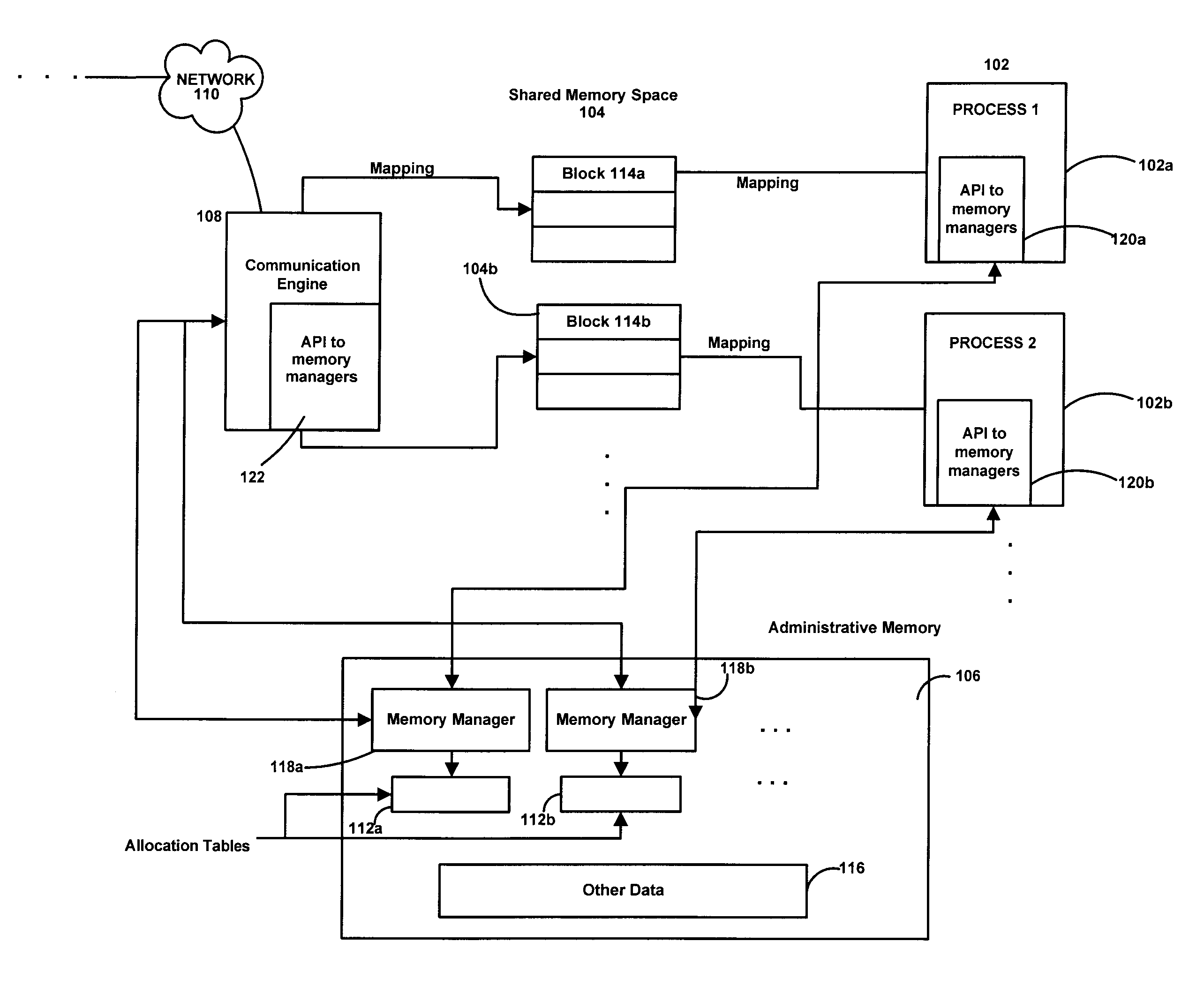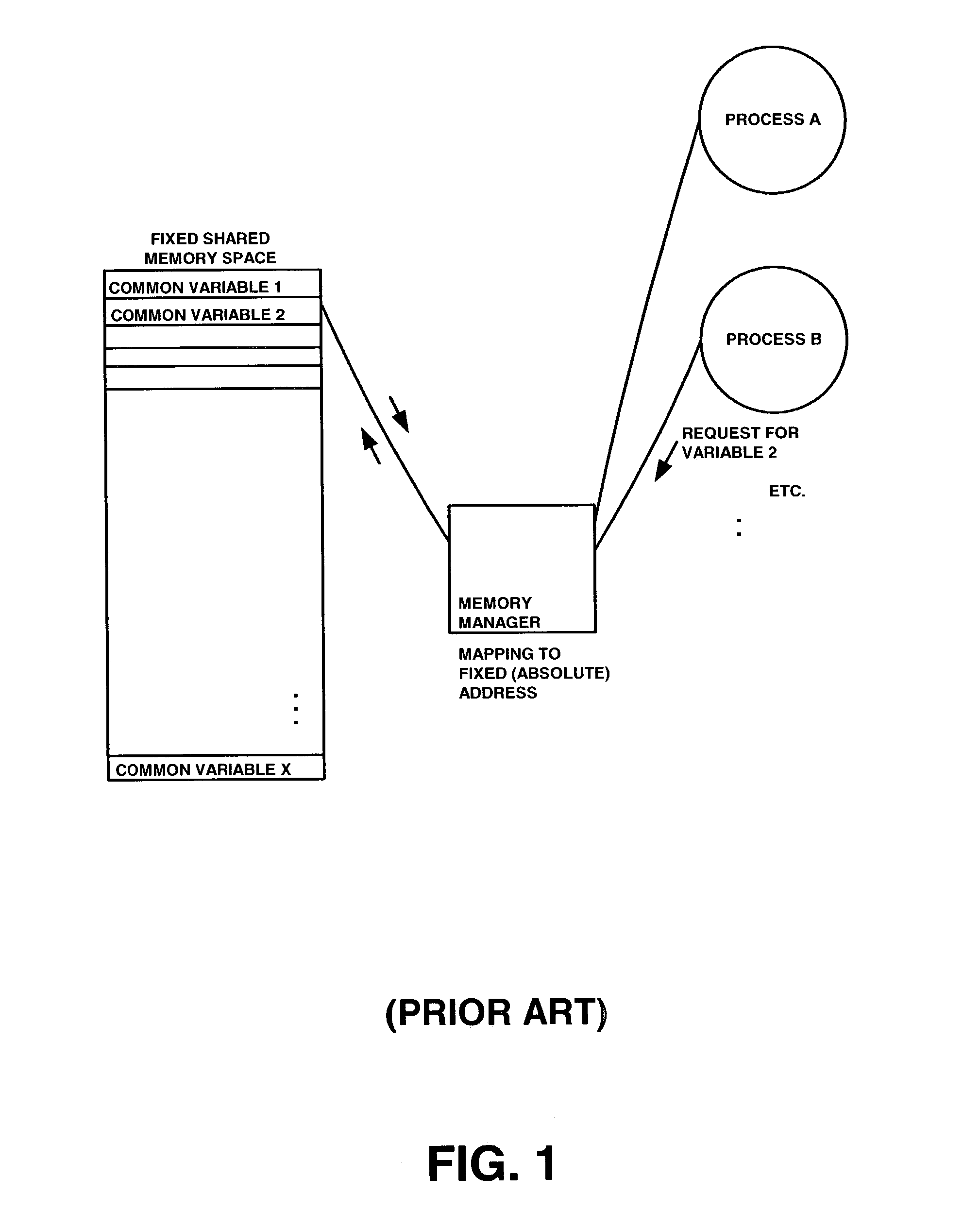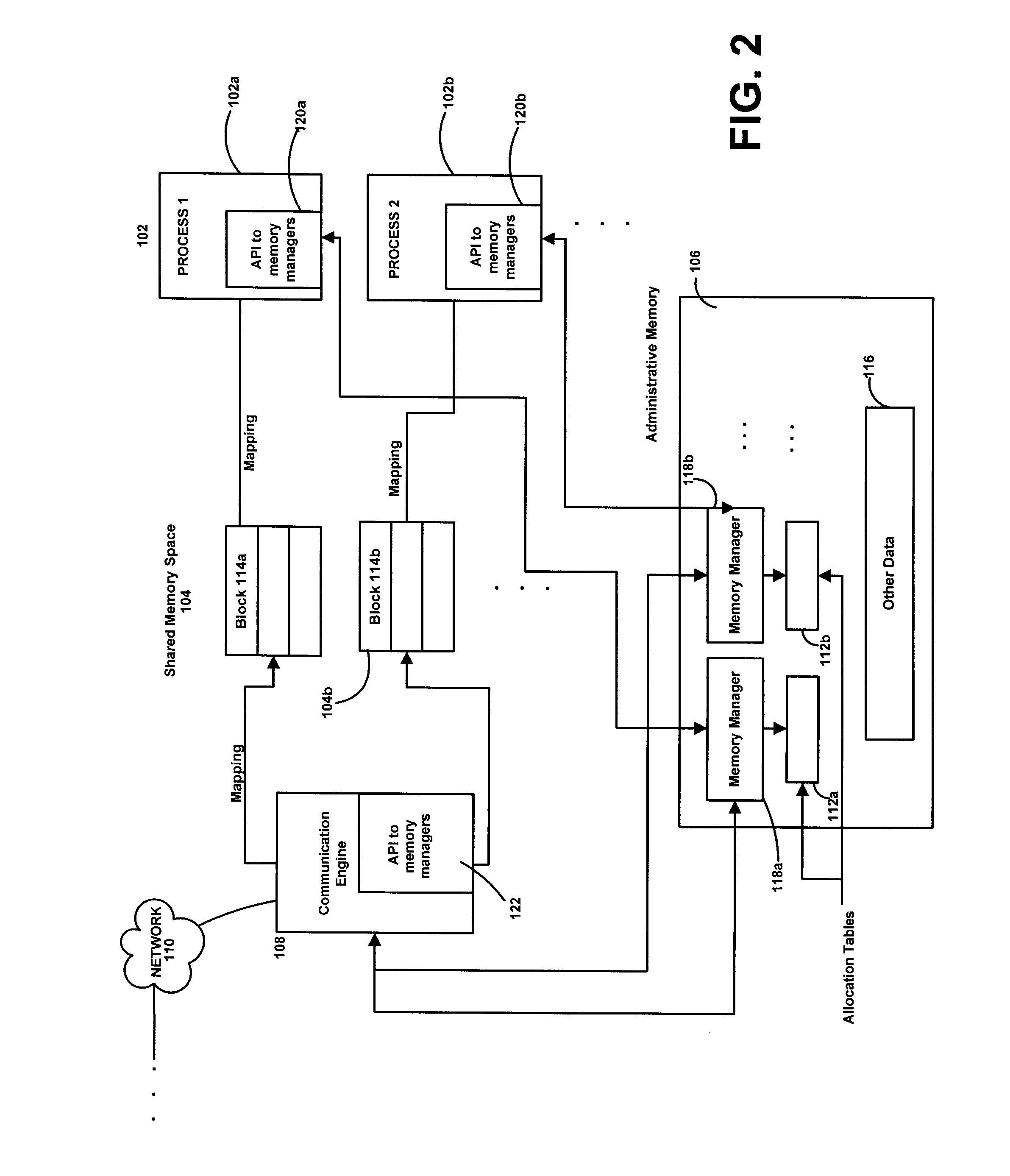Message based inter-process for high volume data
a high-volume data and message technology, applied in the field of computing, can solve the problems of increasing the coding complexity of those applications, relying on a unified set of shared variables may prove inefficient or impossible, and the static block approach may suffer from certain disadvantages, so as to improve efficiency, reduce the potential for memory corruption, and facilitate debugging.
- Summary
- Abstract
- Description
- Claims
- Application Information
AI Technical Summary
Benefits of technology
Problems solved by technology
Method used
Image
Examples
Embodiment Construction
[0015]FIG. 2 illustrates an architecture in which an interprocess communications platform according to an embodiment of the invention may operate. As shown in the illustrated embodiment, a shared memory space 104 may be accessed by a global set of processes 102a, 102b . . . containing an arbitrary number of software applications, threads, objects, modules, routines or other executing or executable processes. The shared memory space 104 may be or include the logical or physical memory space of a microprocessor or other logical or programmable device, or of a collection of clients or other resources, such as a network address space.
[0016]According to the illustrated embodiment, each process in the set of processes 102a, 102b . . . may have at least one memory block in a set of memory blocks 114a, 114b . . . uniquely assigned or mapped to it. The set of processes 102a, 102b . . . may also communicate with an administrative memory 106. In embodiments, the administrative memory 106 may r...
PUM
 Login to View More
Login to View More Abstract
Description
Claims
Application Information
 Login to View More
Login to View More - R&D
- Intellectual Property
- Life Sciences
- Materials
- Tech Scout
- Unparalleled Data Quality
- Higher Quality Content
- 60% Fewer Hallucinations
Browse by: Latest US Patents, China's latest patents, Technical Efficacy Thesaurus, Application Domain, Technology Topic, Popular Technical Reports.
© 2025 PatSnap. All rights reserved.Legal|Privacy policy|Modern Slavery Act Transparency Statement|Sitemap|About US| Contact US: help@patsnap.com



